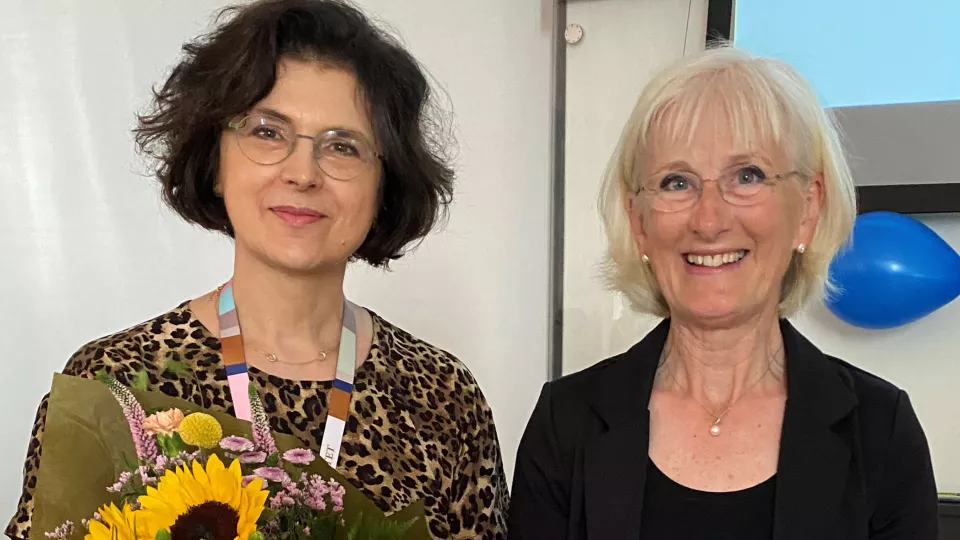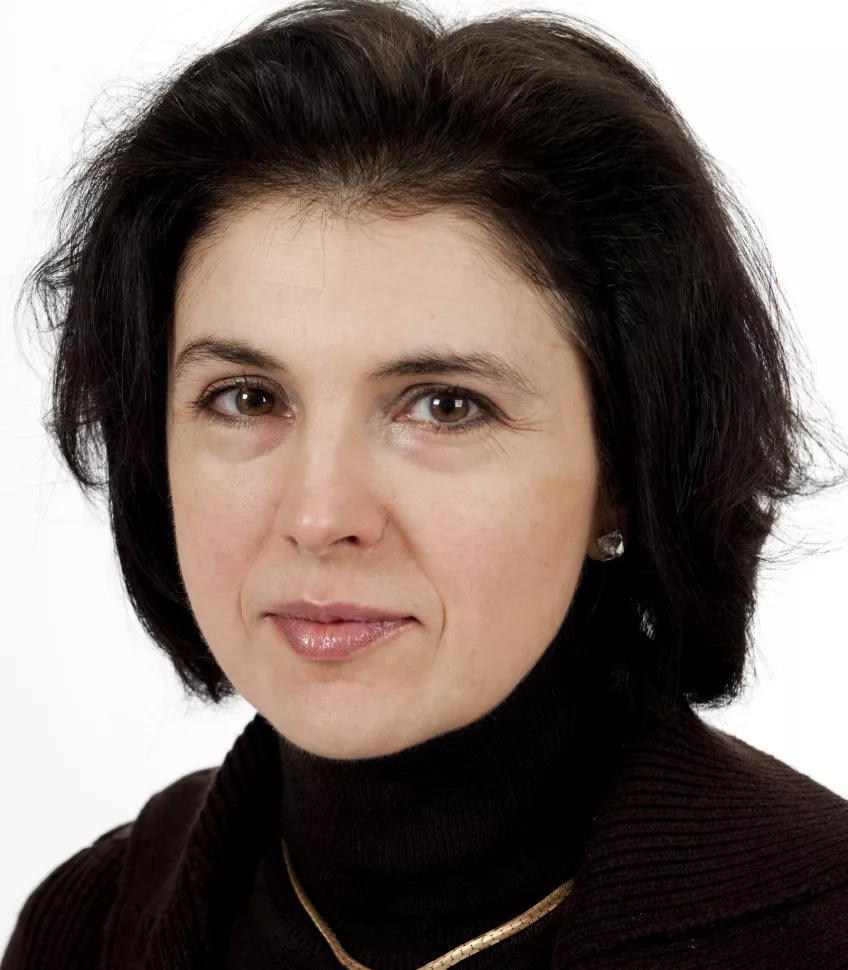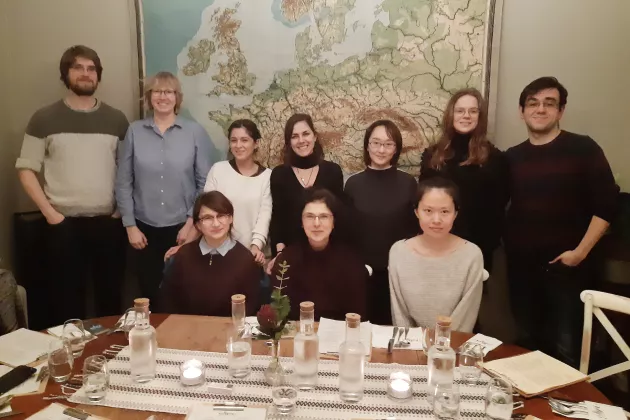Methods developed by Bengt Falck have laid the foundation for the strong neuroscience research on which MultiPark builds.
What does the Bengt Falck Prize mean to MultiPark?
"Many of our younger scientists might not know this, but the research methods developed by Bengt Falck have laid the foundation for the strong neuroscience research on which MultiPark builds. Together with Nils-Åke Hillarp, Bengt Falck developed a fluorescence-based method to visualize cells and axons that produce dopamine and noradrenaline directly in brain tissue. This paved the way for our world-leading research about Parkinson's disease, including animal models and experimental treatments, such as cell therapy. Without the Falck and Hillarp discovery, a strategic research area focused on Parkinson´s disease at Lund University might never have come into existence."
What does the Bengt Falck prize mean to you?
“I am delighted to be awarded the Bengt Falck Prize. To be recognized as a worthy neuroscientist by my colleagues is deeply honouring. One of my early memories as a PhD student in Lund is from a party with the Department (then called Department of Medical Cell Research) at Bengt Falck’s summer house. I had come to Lund as a shy medical doctor from Italy and felt very welcomed and scientifically encouraged in this environment.”
The knowledge we have gained from studying dyskinesias has improved our basic understanding of how brain cells and circuits operate in health and disease.
What is your research about?
“We elucidate pathophysiological processes in brain cells and circuits in rodent models of Parkinson´s disease (PD) and L-DOPA-induced dyskinesia. Dyskinesia means “abnormal involuntary movements”. In persons with PD, these movements arise as an unwanted effect of the dopaminergic medications, particularly L-DOPA. Dyskinesia is a common complication of PD treatments, both pharmacological and surgical ones. It causes stigma and increased motor disability. The knowledge we have gained from studying rodent models of PD dyskinesias has improved our basic understanding of how brain cells and circuits operate in health and disease. This knowledge has moreover led to the identification of new therapeutic principles that are being tested successfully in clinical trials. In addition to dyskinesia, my group and I are studying what happens to the brain when dopaminergic cells degenerate (as it happens in PD). This has led us to identify potentially disease-slowing treatments that boost mechanisms of cellular resilience and self-repair”.
Why does this matter to Parkinson’s patients?
“Our research has identified several treatment principles improving symptoms of PD and countering the complications of its current therapies. In March this year, two different clinical trials (supported by a large non-profit US Foundation) announced positive results in patients with PD for treatments that wefirst evaluated with success in animal models. One trial was about a treatment for dyskinesia, and the other one pertained to a potentially disease-modifying drug. These results are very encouraging and show that ideas and results produced through experimental research in animals can benefit people who suffer from this debilitating disease. I hope our research can make a definite impact on how PD is managed, particularly regarding pharmacological strategies to control PD symptoms and therapy complication, and interference with the underlying neurodegenerative process.”
What turned you to conducting research about dyskinesia?
“It is actually the result of a pragmatic decision I made after my PhD thesis defence. When I started my path as an independent researcher, I decided to focus on dyskinesia not only because it is a striking motor phenomenon, but also because I needed to focus my limited resources on a specific and tractable topic. This was the time before advanced surgical treatments (such as deep brain stimulation and intestinal dopa infusion) had received regulatory approval for the therapy of PD. Many PD patients were therefore suffering from severe dyskinesias, sometimes worse than the primary disease, without being offered any other option than reducing the dose of L-DOPA (which would of course worsen their PD symptoms). Building up a strong track record on dyskinesia research proved to be the right choice for me. One can say that my recipe for success was to identify a significant clinical problem and investigate it experimentally using research methods that I had learned very well during my PhD and early post-doctoral period.”
Experimental research in animal models is becoming increasingly questioned; why are they still a prerequisite for discoveries in neuroscience?
“Besides not wanting to harm animals, the most common argument against animal experiments is that rodents are not like humans. Still, it never ceases to amaze me how many things we and rodents have in common when it comes to the organization of brain cells and circuits. If we are smart enough to isolate one question at a time and make sure that our model is suitable for that particular question, then we have so much to learn from rodent models. And we do need these models because some things are just not possible to investigate in living human subjects, nor in human cells. For example, we need animal models to study the interplay between the brain and other organs, the brain and the vasculature, as well as the function of mature neuronal circuits in regulating different behaviours in health and disease.
You have chosen to stay in academia since you defended your PhD thesis. What does academia offer that you cannot get elsewhere?
“Deep meaningfulness! It has costed enormous efforts at times, but it has been worth all of it. I could never dream of a better way to spend my working life. In the academic research environment, I have the luxury to decide what I want to devote my energies to. Simply by chasing the solution to very specific questions, you get many more answers than you asked for. And you feel that you get smarter and smarter in understanding complex problems, in making choices and in solving difficult situations. I cannot think of any other job that allows us to grow so much, both individually and together with our colleagues and collaborators.”
I think it is an unfortunate misconception that you, as a young group leader, should avoid working closely with your senior peers. Science develops faster if you take advantage of all possible collaborative networks.
Which has been the hardest step during your career so far?
“To realize that I needed to establish a research group of my own at the same time when I had small children to raise and very little grant money. Of course, there are periods when you doubt, but that is completely normal. It only tells you that you are growing by being on the limits of your comfort zone, that you are ambitious. I believe that it always pays off to stubbornly endure these difficulties.”
Do you think it is easier for young researchers to establish an academic career nowadays?
“It definitely is. In earlier times, young researchers had to work under a professor for many years before they could establish a research group. Now, there are many opportunities to get large start-up grants during a period lasting for up to 12 years after one´s Ph.D. thesis defence (with added time for parental leaves). Many of these early-career grants also bring an “excellencetag” into your CV, which will make it easier to get more opportunities when the initial funding period is over. Still, establishing your own scientific niche and a robust track record requires quite a lot of dedication and hard work. When one goes through difficult times, it is good to remember that we have all been through the same difficulties”.
So young researchers are more independent today?
"Yes, in many ways, but I also think it is an unfortunate misconception that you, as a young group leader, should avoid working closely with your senior peers. Developing your scientific niche should not imply that you have to break completely from your supervisors. Science develops faster if you take advantage of all possible collaborative networks that you can be part of. And your group will appreciate being embedded into a larger professional context."




